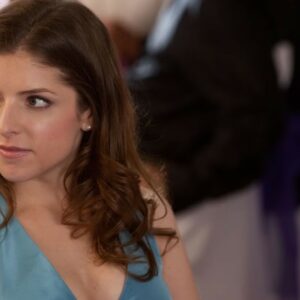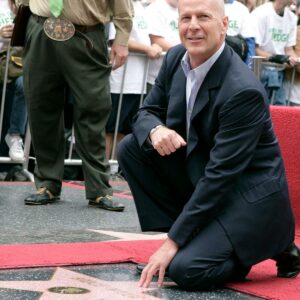Introduction
In the vibrant world of animation, where characters are brought to life by a blend of artistry and voice, Apple TV+’s Central Park stands out as a musical comedy that marries humor, heart, and social commentary. The series, created by Loren Bouchard, Nora Smith, and Josh Gad, offers a unique take on the classic New York City experience. At its core is Central Park, a lush expanse of green in the middle of the metropolis, where an eccentric cast of characters intersect, each with their own stories to tell. But what sets Central Park apart is its musicality, turning everyday moments into Broadway-esque numbers that capture the imagination.
One of the star talents contributing to this dynamic world is none other than Mary J. Blige. Known as the “Queen of Hip-Hop Soul,” Blige brings her unmistakable voice and energy to Central Park, enriching the series not only as a voice actress but also as a musical powerhouse. Blige’s involvement in Central Park transcends the traditional role of a voice actor; it’s a cultural moment that underlines her influence across different sectors of the entertainment industry.
Introduction to Mary J. Blige’s Character
In Central Park, Mary J. Blige voices the character of Paige Hunter’s mother, Gladys. While Gladys is not one of the main cast members, her presence carries weight, providing emotional depth and a familial connection to the show’s storylines. Paige Hunter, voiced by Kathryn Hahn, is a journalist and a mother, trying to juggle her career, family life, and a quest to uncover the secrets that threaten the park’s existence. Gladys, her mother, embodies the wisdom and strength often attributed to maternal figures in narratives, serving as a grounding force for Paige.
Blige’s portrayal of Gladys adds layers to the character, transforming her into more than just a side role. With a voice that exudes warmth, authority, and a touch of sass, Gladys becomes a beacon of wisdom, often delivering advice that resonates not only with Paige but with the audience as well. Key episodes like “Central Dark” showcase Gladys’ influence, as she navigates her daughter through the complexities of life, all while maintaining her signature blend of humor and heart.
While Central Park is filled with eccentric and exaggerated characters, Gladys stands out for her realism. She’s the embodiment of a mother who has seen it all, offering guidance with a mix of tough love and unconditional support. Blige’s voice acting makes Gladys a character that viewers remember long after the episode ends, her presence echoing through the show’s emotional beats.
Mary J. Blige’s Musical Contributions
Beyond her role as Gladys, Blige’s contributions to the musical side of Central Park cannot be overstated. Music is the lifeblood of the series, with each episode featuring original songs that propel the narrative forward and deepen the emotional connection with the audience. Blige’s powerhouse vocals add a distinct layer of soul to the series’ soundtrack, infusing it with her signature style.
One of the standout performances is in the episode where Gladys sings “Park Life,” a soulful ballad that captures the essence of New York’s iconic park and the lives that intertwine within it. Blige’s delivery is smooth yet powerful, bringing a sense of gravitas to the song that elevates it from a simple musical number to an anthem of resilience and community. Her voice, rich with emotion, adds a unique texture to the show’s musical landscape, making her performances a highlight for both fans of the series and Blige’s music.
Blige’s ability to channel deep emotion through her singing is a key factor in making Central Park more than just an animated comedy. Her songs are not just filler; they are integral to the storytelling, often reflecting the internal struggles of the characters and the larger themes of the series. Whether she’s singing about love, family, or the challenges of city life, Blige brings authenticity to the music, reminding viewers of her status as a musical icon.
Exploring Blige’s Impact on the Series
The inclusion of a star like Mary J. Blige in Central Park adds a layer of prestige to the series. Blige’s involvement not only attracts a broader audience but also enhances the show’s credibility in both the music and entertainment industries. Her presence bridges the gap between mainstream music and animation, creating a crossover appeal that brings in viewers who might not have otherwise tuned in.
Blige’s fans, many of whom have followed her career since the early 90s, are introduced to the quirky, animated world of Central Park through her involvement. This cross-pollination of audiences is crucial for a series that blends various genres and styles, aiming to appeal to a diverse range of viewers. Her contributions as a voice actress and singer attract attention from both music critics and animation enthusiasts, broadening the show’s reach.
Critically, Blige’s performance has been met with praise. Reviewers have highlighted her ability to bring depth and emotion to her character, as well as her seamless integration into the musical fabric of the series. Fans have also expressed appreciation for her role, often citing her performances as standout moments in the show. On social media, clips of her musical numbers are shared widely, further cementing her impact on the series.
Thematic Relevance and Cultural Representation
Mary J. Blige’s character and performance in Central Park contribute significantly to the series’ broader themes of diversity and cultural representation. Central Park is a melting pot of characters from different backgrounds, reflecting the real-life diversity of New York City. Blige’s role as Gladys and her musical contributions help to highlight the importance of Black voices in this narrative, bringing a sense of authenticity and representation to the show.
As an icon in the music industry and a symbol of Black excellence, Blige’s involvement in Central Park aligns with her broader mission of promoting Black culture and empowering underrepresented communities. Her portrayal of Gladys reflects the strength and resilience often associated with Black motherhood, adding depth to the character and resonating with audiences who see themselves reflected in her.
Moreover, Blige’s musical contributions are rooted in the traditions of Black music, from soul to R&B. Her songs in Central Park carry the weight of these genres, bringing a rich cultural history to the series. In doing so, she helps to elevate the show beyond a simple animated comedy, making it a platform for celebrating and promoting Black culture.
Conclusion
Mary J. Blige’s contributions to Central Park are a testament to her multifaceted talent and her ability to transcend traditional roles. As a voice actress, she brings warmth, wisdom, and depth to her character, making Gladys a memorable figure in the series. As a singer, she infuses the show’s soundtrack with her signature style, adding emotional weight and cultural significance to the music.
Blige’s involvement in Central Park elevates the series, attracting a broader audience and adding prestige to the show. Her performance has resonated with both fans and critics, further solidifying her impact on the series. But beyond the entertainment value, Blige’s role in Central Park is a reflection of her ongoing mission to promote diversity and empower Black voices in the entertainment industry.
Looking ahead, Mary J. Blige’s success in Central Park opens the door for future ventures in animation and voice acting. Her ability to bring depth and emotion to her roles, both as an actress and a singer, suggests that we may see more of her in this space. As she continues to break boundaries and expand her influence, Blige remains a cultural icon whose contributions to Central Park are just one chapter in her ongoing legacy.





